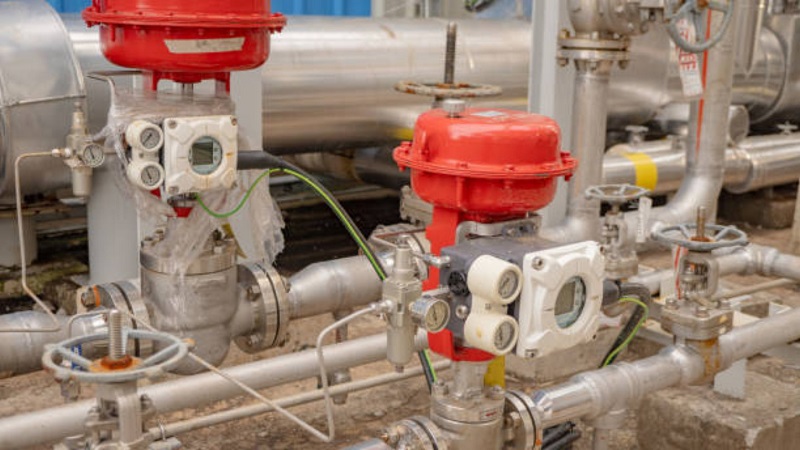When it comes to controlling fluids in industrial automation, choosing the right valve system is all about getting the balance between efficiency, safety, and cost just right. Out of all the options on the market, air operated valves often take the lead because they perform reliably, even in tough conditions. Backed by well-known manufacturers, these pneumatic valves usually outdo older manual and electric models in both everyday plants and specialized applications.
In the paragraphs that follow, we’ll point out the main industries that gain the most from air operated valves and zero in on the features that give these devices the edge over more conventional systems.
Fast-Paced Manufacturing Lines
In a speedy manufacturing setting, every tick of the clock counts. Keeping the line moving without delays or extra hands on deck is a must. This is exactly where air operated valves shine. Their quick open-and-close cycle makes it possible to change states almost instantly, which in turn supports the high number of cycles the process demands.
For a long time, manufacturers relied on older manual controls and even the slower electric valve actuators, but those systems just can’t keep pace with today’s high-speed production lines. That’s why many factories turn to pneumatic valves in places like automotive assembly floors, electronics plants, and packaging operations: the air-powered actuators offer fast, repeatable motion and require very little maintenance. Their speed and toughness help plant managers meet rising output targets without constant worry.
The same advantages make air-operated valves a favorite in water and wastewater treatment facilities. These plants need valve control that is not only accurate but also reliable enough to let operators manage the system from a distance across large, spread-out sites. Pneumatic valves shine in this environment because they handle wet and corrosive conditions better than electric alternatives. Where water leaks and electrical shorts can ground electric actuators, the simple air-powered design keeps working, which is exactly what operators want.
Pneumatically actuated valves are often the unsung heroes of large-scale pipelines and treatment systems. Because they use compressed air rather than electric power to open and close, these valves keep chemical dosing, filtration, sludge handling, and discharge controls running smoothly, even when the surroundings are corrosive or muddy. Their ability to fail-safe—meaning they close or open to a preset position when air pressure drops—adds an important layer of protection against environmental spills. For plant operators trying to control costs and limit liability, air-operated valves are usually the most dependable and affordable option.
Chemical and Petrochemical Industries
Chemical plants handle substances that can be aggressive, pressurized, or, in some cases, downright explosive. Under such conditions, traditional electric valve controls can struggle, especially when wiring harnesses corrode or sparks become a concern. That is why many facilities in this sector now prefer pneumatic actuators.
Fail-safe operation, quick response times, and high resistance to corrosion make pneumatic valves well suited for these facilities. Their straightforward design means they can be made from rugged materials—like stainless steel or specialized alloys—that stand up to harsh chemicals. Furthermore, because the actuators contain no electric components, they can be easily configured to meet strict safety standards, including explosion-proof ratings. That flexibility is one reason so many engineers opt for air-operated systems in challenging environments.
Working with chemicals or heat-sensitive products can make electric power a risky choice. When plants handle dangerous materials, they need systems that won’t fail because a wire shorts out. That’s why many facilities swap electric valves for air-operated and pneumatic ones. These air-driven devices keep lines running safely, even in tough settings.
Food and drink factories care most about cleanliness, accuracy, and keeping machines moving. They must uphold strict sanitary rules and pass-a-second-look cleaning audits. To meet high-speed targets, the entire valve setup needs to run on autopilot.
Pneumatic valves fit perfectly into that plan. They give operators fast, pinpoint control during mixing, filling, testing, and flushing. Compared to hand cranks or electric servos, air valves are quicker to wipe down and simpler to service. That saves time and cuts the risk of hidden germs.
Engineers build these valves from food-grade metals and plastics and polish every inside edge. The slick finish stops bacteria from getting a foothold, and the tough materials shrug off hot, caustic washes. Because they won’t corrode or short-circuit, production can push ahead without pausing for repairs. Meeting safety rules and keeping customers happy is then a lot less stressful.
Why Air-Operated Valves Are Game-Changers for Pharma and Biotech
When you step inside a modern drug-manufacturing facility or a high-tech biotech lab, you quickly realise that even the tiniest mistake can be costly. From tiny lab benches to gigantic production suites, everything has to run like clockwork. That’s why the industry relies on equipment that works perfectly every single time. One of the unsung heroes in that equation is the air-operated valve.
Unlike older valve systems that use electrical components, air-operated valves are pushed open or shut by compressed air. This setup is a natural fit for cleanroom environments. Because there are no exposed electrical contacts, the risk of dust or moisture causing a short circuit drops to almost zero. Operators can isolate, control, and inspect these valves quickly without tearing apart elaborate wiring or safety guards. That simplicity means staff spend less time troubleshooting and more time focused on their core tasks.
Another big plus is speed. Pneumatic valves switch positions in a heartbeat, which is essential when you’re dosing, mixing, or sampling expensive biochemicals. Fast switching not only keeps individual batches in line but also helps manufacturers tick the boxes on Good Manufacturing Practices (GMP). A slight delay in a valve opening could throw off a whole batch, so that responsiveness is more than a convenience; it’s a hard-and-fast requirement.
Maintenance is equally straightforward. Most components can be checked and replaced with basic tools, which cuts down on costly downtime. In an industry where production schedules are often as tight as the margins, that small advantage can save days—or even weeks—of lost revenue.
Extra Benefits of Pneumatic Valves
Pneumatic valves, or air-operated valves, do more than just fit into specific jobs. They bring a handful of advantages that make them stand out from more traditional valve systems.
Energy Savings: Because pneumatic circuits can cycle on and off quickly, they often use less overall power than electric models. In busy plants that work 24/7, those small savings add up fast.
Built-in Safety: Air valves don’t throw off sparks or heat when they move, so they’re a smarter choice for areas where flammable gases or dust might be present. That peace of mind is priceless on the factory floor.
Fewer Parts, Less Fuss: With only a handful of moving pieces inside, pneumatic valves can shrug off daily wear and tear. This simplicity translates into longer life and lower repair bills, keeping maintenance crews happy.
Better Bottom Line: When you combine all the savings from uptime, repairs, and accident risk, many companies find that their pneumatic system costs them less over time than an electric setup.
Thanks to these traits, you’ll see pneumatically actuated valves popping up in warehouses, chemical plants, and food processing lines alike. They fit right in wherever speed, reliability, and versatility are a must.
Wrapping It Up
Modern industries are getting faster and more precise, yet some older valve designs simply can’t keep up. Whether you are running an assembly line, a chemical reactor, or a pharmaceutical cleanroom, air-operated and pneumatically actuated valves are likely to have the performance edge you need.
If your company—whether you’re a primary or a secondary B2B firm—is thinking about upgrading your fluid and gas control systems, adding new pneumatic valves can be a smart, safe, and cost-effective move. Picking the right pneumatic equipment helps your operation stay competitive today and ready for whatever tomorrow might bring.



















Leave a Reply